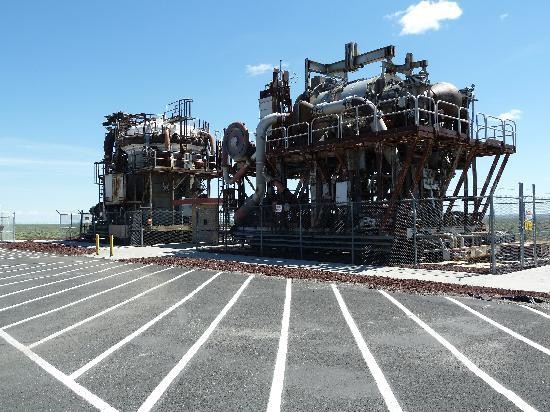Experimental Breeder Reactor I
Introduction
Text-to-speech Audio
Experimental Breeder Reactor I, located 18 miles southeast of Arco, Idaho, was the first nuclear reactor to produce electricity, which occurred on December 20, 1951, lighting four two-hundred watt bulbs. The next day the reactor was able to power the entire building. The reactor was built with the goal of validating nuclear physics theory, which posited that a reactor, called a breeder reactor, could produce more fissile material than it consumes. It proved this theory goal in 1953. The reactor suffered a partial meltdown on November 29, 1955. It was also the first reactor to use plutonium to generate electricity. A second experimental reactor (EBR-2) replaced it in 1964 and was decommissioned. It opened as a museum in 1976. It was designated a National Historic Landmark in 1966 and placed on the National Register of Historic Places in 1984.
Images
Aerial view of the reactor

The control room

Two prototype reactors built for the Aircraft Nuclear Propulsion Project

Sources
http://www4vip.inl.gov/ebr/
http://focus.nps.gov/pdfhost/docs/NHLS/Text/66000307.pdf
https://en.wikipedia.org/wiki/Experimental_Breeder_Reactor_I
